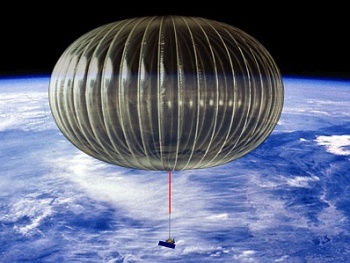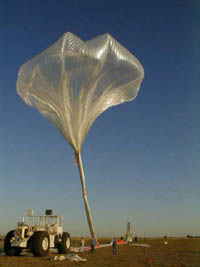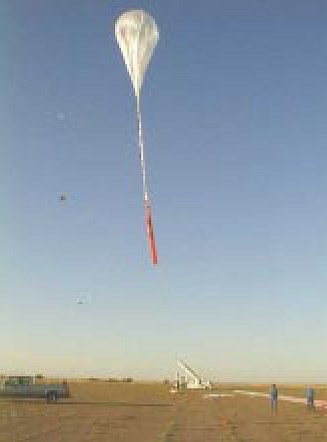Purpose of the flight and payload description
A project to develope a balloon system capable of providing scientific measurements for 100-day missions with floating altitude close to 35km transporting payloads of near 1.5 tons.
It is a super-pressure balloon made of a composite fabric (polyester + polyethylene film and fabric) that is filled with Helium and hermetically sealed. Meridional tendons provide additional rigidity to the envelope. The pressure inside the envelop is maintained above the ambient pressure at all times to keep the balloon afloat at a constant altitude. During daytime the internal pressure increases due to solar heating but the volume remains constant due to the rigidity of the envelope. At night the pressure drops due to infrared radiative cooling to space, but as long as the internal pressure remains above the ambient pressure, the balloon stays at the same altitude.
On the future, transported by stratospheric winds around the globe at 30m/s the ULDB would be make a full circunnavegation to Earth in about 2 weeks.
Details of the balloon flight
Balloon launched on: 6/4/2000 at 12:40 utc
Launch site: Scientific Flight Balloon Facility, Fort Sumner, (NM), US
Balloon launched by: National Scientific Balloon Facility (NSBF)
Balloon manufacturer/size/composition: Zero Pressure Balloon 60.000 m3 - SF4-2.241-1.5/.8-N
Balloon serial number: R2.42-1.5U1-01
Flight identification number: 485NT
End of flight (L for landing time, W for last contact, otherwise termination time): 6/5/2000 at 18:26 utc
Balloon flight duration (F: time at float only, otherwise total flight time in d:days / h:hours or m:minutes - ): 30 h
Landing site: 2 miles N of Bernardillo, New Mexico, US
The balloon was launched June 4th, 2000 by dynamic method assisted by a launch vehicle and using a auxiliary balloon to help to deploy the Ultra Long Duration Balloon material.
Launch and ascent were nominal and the balloon reahed float altitude and mantained the float level near 30 hours.
This was the second flight of a 60.000 m3 balloon, modified from the last flight in October 1999 when it failed due to a sudden displacement of nearly twenty tendons.
To avoid this, the new balloon was of the same pumpkin shape, but the shell made with polyethylene and with a new design -foreshortened- in the longitudinal tendons.
The balloon successfully pressurized, reached float altitude and performed very well during the near 30 hours of flight.
External references
- ULDB website - Balloon Programe Office NASA Wallops flight facility
- Inside Wallops Volume XX-00 Nº 25
667If you consider this website interesting or useful, you can help me to keep it up and running with a small donation to cover the operational costs. Just the equivalent of the price of a cup of coffee helps a lot.




